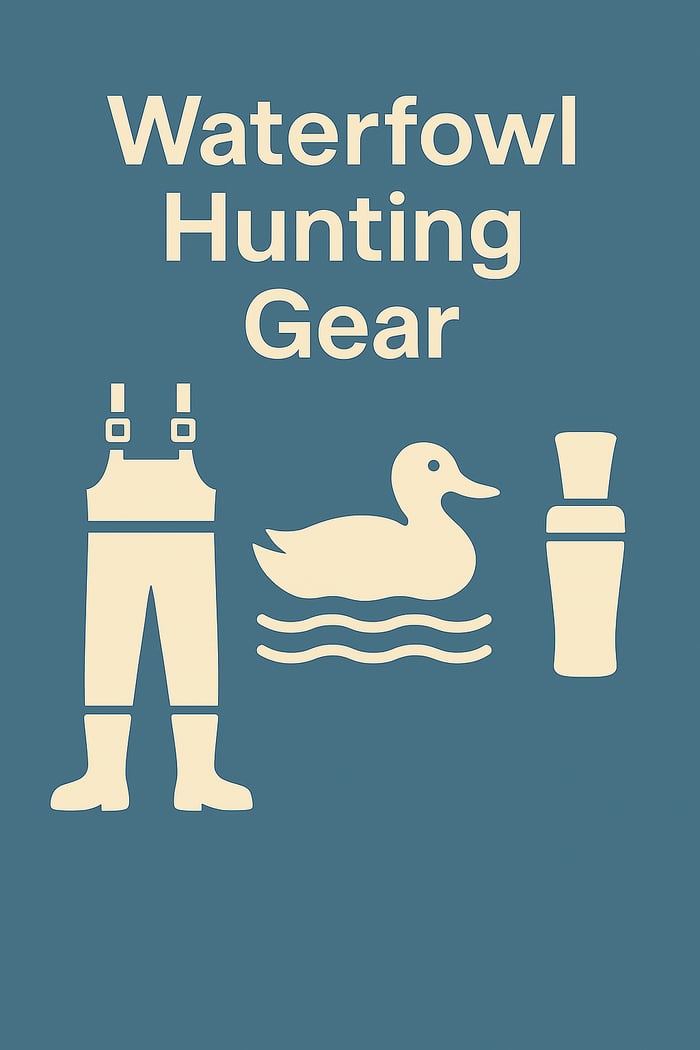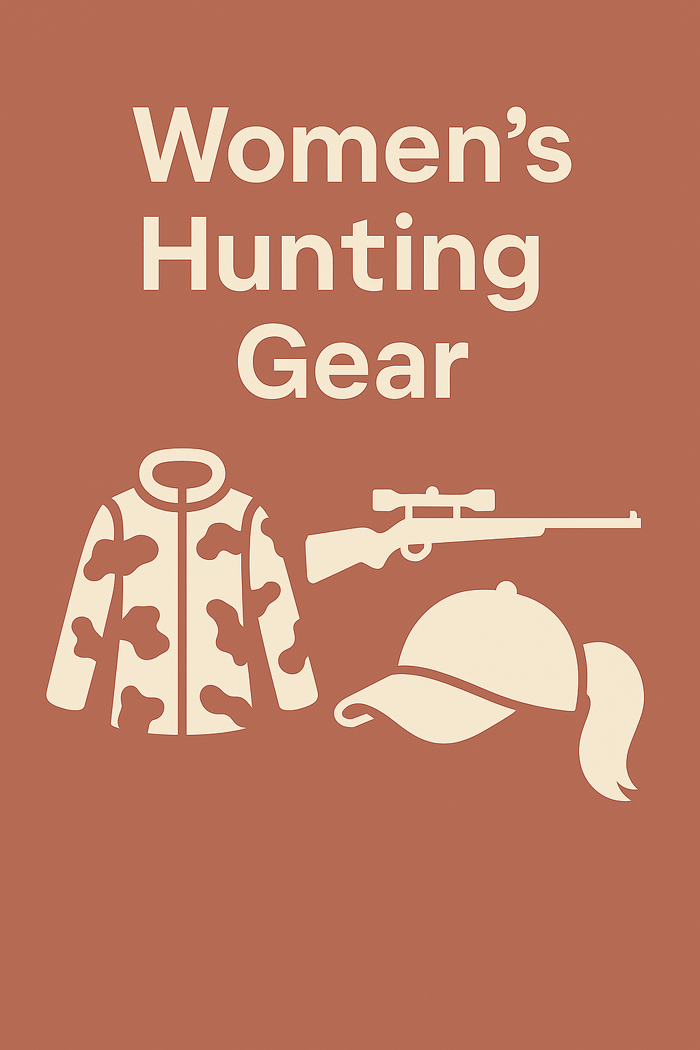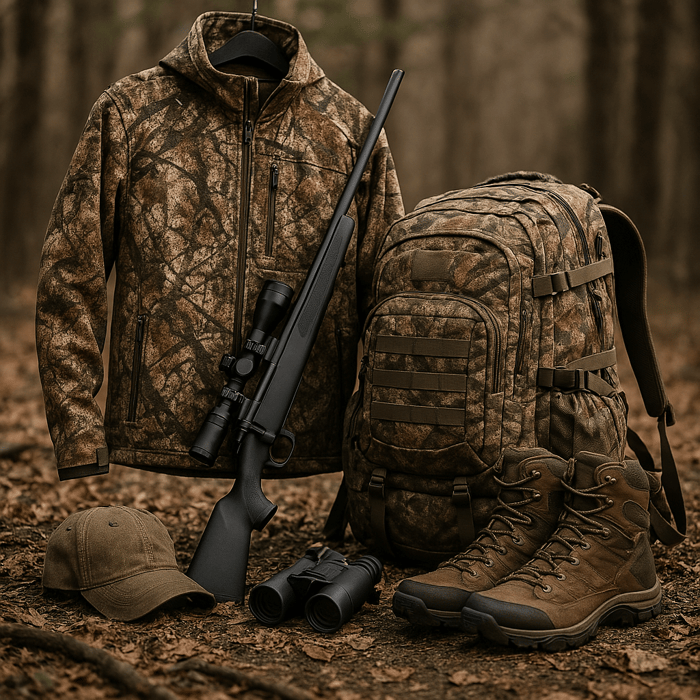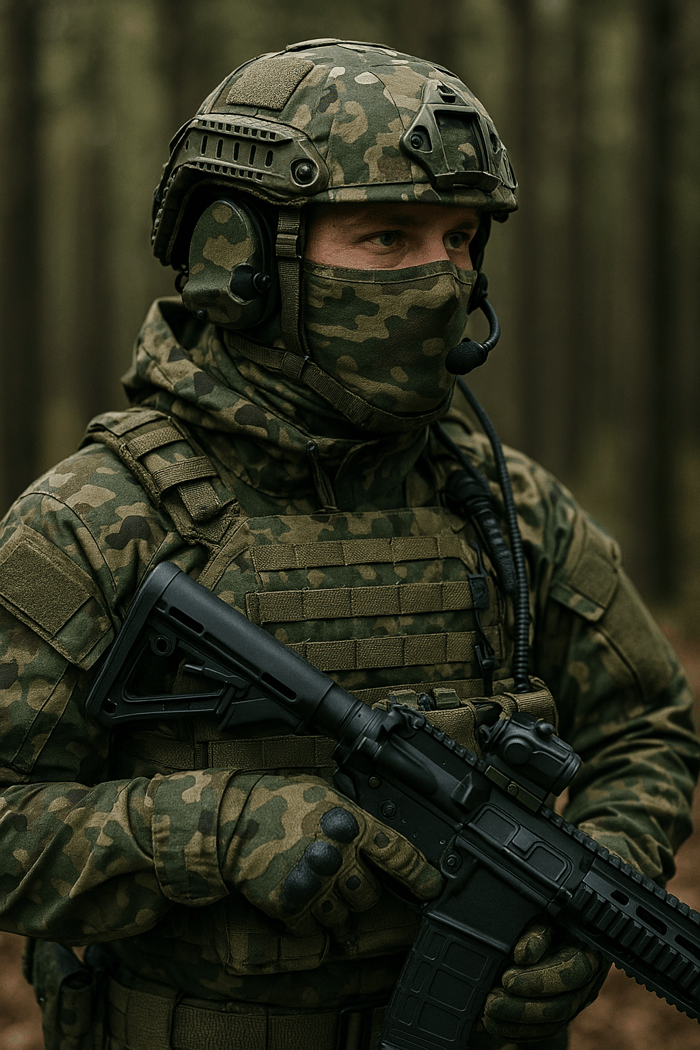Waterfowl hunting is a way of life, not just a sport—it's an addiction that brings you closer to nature, challenges your abilities, and requires the right gear. Whether you're wading through a cold marsh after mallards or spot setting in a field for snow geese, the right waterfowl hunting equipment is the difference between a successful and enjoyable experience. This in-depth guide will take you through every detail of waterfowl hunting equipment, including clothing and guns to decoys, calls, and accessories. waterfowl hunting gear We will explain what to consider, how to select the best pieces, and how to take care of your equipment so it lasts for decades to come. With quality waterfowl hunting equipment, you'll be ready for whatever the season brings.
Why Investing in Quality Waterfowl Hunting Equipment is Important
Hunting ducks, geese, or any other waterfowl frequently involves pushing through harsh conditions—consider icy temperatures, soggy marshland, and driving winds. Without proper waterfowl hunting equipment, however, you may end up chilly, soggy, or worse still, unable to camouflage yourself, and pushing away the game. Good equipment keeps you comfortable, secure, and camouflaged, and enhances your prospects of a successful hunt. From waterproof waders to authentic decoys, each item of waterfowl hunting equipment plays an important part in your overall experience.
In this 3000-word guide, we will dissect the key categories of waterfowl hunting equipment, provide practical advice for selecting the appropriate gear, and show you some of the top products currently available. Whether you're just starting out or a veteran hunter, this piece will assist you in putting together a setup that gets you the most time out in the field. Let's explore the realm of waterfowl hunting gear and prepare you for the season.
Critical Types of Waterfowl Hunting Equipment
Clothing: Your First Line of Defense
For waterfowl hunting equipment, clothing is your beginning. Waterfowl environments tend to be wet, cold, and harsh, so you require clothing that insulates you from the cold, keeps you dry from the wet, and conceals you from keen-eyed birds.
Waders: Remaining Dry in the Wettest Environments
Waders are probably the most important equipment for marsh, swamp, or timber-flooding waterfowl hunters. They keep you dry from water and mud but permit you to walk or move about without hindrance. Chest waders are the most sought-after type, providing complete protection from your feet to chest level. Opt for waders that are waterproof and yet breathable materials such as Gore-Tex or tough neoprene for cold climates.
Key Features: Reinforced knees for durability, insulated linings for warmth, and adjustable straps for a custom fit.
Top Picks: Sitka Gear's Delta Zip Waders and Drake Waterfowl's Guardian Elite Waders are great picks for tough, dependable waterfowl hunting gear.
Pro Tip: Select waders with camouflage patterns such as Realtree Max-7 or Mossy Oak Shadow Grass Blades to blend in with your environment.
Camouflage Clothing: Blending In with Nature
Camouflage is essential waterfowl hunting attire since ducks and geese possess great vision. Your attire must assist you in becoming invisible, whether you are located in a marsh filled with cattails or a field of stubble. Begin with moisture-wicking base layers to maintain sweat prevention, include insulating mid-layers such as fleece or down to provide heat, and finish with a waterproof, camo-printed outer layer.
Key Features: Search for windproof and waterproof membranes in jackets and pants, numerous pockets for equipment, and articulated designs to move around with ease.
Top Picks: Sitka Gear Dakota Hoody and Arc Welded Softshell Jacket by Banded are rugged, weather-resistant choices for waterfowl hunting equipment.
Pro Tip: Refrain from wearing or using shiny fabrics or accessories since they will reflect light and scare off the birds.
Insulated Boots: Keeping Your Feet Warm and Functional
Cold, soggy feet can end a hunt, so insulated, water-resistant boots are a must in your waterfowl hunting arsenal. Choose boots with a minimum of 800–1200 grams of Thinsulate insulation for cold weather and tough, non-slip bottoms for traction in mud or ice.
Top Picks: LaCrosse AlphaBurly Pro boots and Muck Arctic Pro boots are popular for comfort and durability.
Pro Tip: Top your boots with moisture-wicking socks to ensure dry, cozy feet on long hunts.
Gloves and Headwear: Don't Overlook the Details
Your hands and head must also be protected. Waterproof, insulated gloves with a great deal of dexterity are essential for working with calls, shells, and your shotgun. Camouflage beanies or hats keep your head warm and hidden, while face masks or camo pattern neck gaiters cover your face from suspicious birds.
Recommendation: The Drake Waterfowl MST Refuge Gore-Tex Gloves and Sitka Gear's Fanatic Beanie are great additions to your waterfowl hunting arsenal.
Firearms: The Heart of Your Waterfowl Hunting Gear
A reliable shotgun is the centerpiece of your waterfowl hunting gear setup. Waterfowl hunting typically calls for a 12-gauge or 20-gauge shotgun, as these provide the power and range needed to take down ducks and geese at varying distances.
Choosing the Right Shotgun
When selecting a shotgun for your waterfowl hunting gear, consider these factors:
Action Type: Fast follow-up shot semi-automatic shotguns, such as the Benelli Super Black Eagle 3 or Beretta A400 Xtreme Plus, are favorites among shooters. Pump-action shotguns, such as the Remington 870 Wingmaster, are dependable and less expensive.
Barrel Length: A 26- to 28-inch barrel provides a fine balance of swing and accuracy for waterfowl hunting.
Choke Tubes: Employ better cylinder or modified chokes for shots at close distances (less than 30 yards) and full chokes for farther distances (40+ yards).
Finish: Select a shotgun with a corrosion-resistant finish, such as Cerakote or stainless steel, to tolerate wet environments.
Top Picks: The Browning Maxus II and Mossberg 940 Pro Waterfowl are great options for long-lasting, high-quality waterfowl hunting equipment.
Ammunition: Matching Shells to Your Hunt
Ammunition is an essential part of your waterfowl hunting equipment. Federal regulations mandate non-toxic shot like steel, bismuth, or tungsten to help preserve wetlands. Shot sizes #2, #3, or #4 are suitable for the majority of waterfowl species.
Key Features: Choose high-velocity shells (1400–1550 fps) to maximize range and stopping power. Greater payloads (1–1¼ oz) are ideal for larger birds such as geese.
Top Recommendations: Federal Black Cloud TSS, Winchester Blind Side, and Hevi-Shot Hevi-Steel are all top performers.
Pro Tip: Pattern your shotgun with various loads to discover the optimum combination for your waterfowl hunting equipment setup.
Decoys: Call Birds Within Range
Decoys are an essential part of waterfowl hunting equipment, as they duplicate the look of resting or feeding waterfowl to draw birds to your spread. A strategically designed decoy setup can mean the difference between returning home with your limit and going home empty.
Types of Decoys
Floating Decoys: Ideal for water hunting, these decoys naturally bob with the waves. Avian-X, Higdon, and Dakota Decoys provide realistic, long-lasting options.
Full-Body Decoys: Employed in field hunts, these decoys mimic standing or feeding birds. Flocked heads create realism for your spread.
Motion Decoys: Spinning-wing decoys, such as the Mojo Outdoors Elite Series or Lucky Duck HD, create lifelike movement to entice birds from distance.
Decoy Setup Strategies
Quantity: On small water hunts, 12–24 decoys will do. On field or large water hunts, utilize larger spreads of 50+ decoys for maximum visibility.
Placement: Place decoys in a U, J, or V formation to provide a landing spot for approaching birds. Leave openings to reproduce natural flock movement.
Mixing Species: Mix decoys of varying species (such as mallards, pintails, or Canada geese) to achieve a natural spread.
Pro Tip: Insert motion decoys intermittently to not overdo it, as some birds may react negatively to too much movement in highly hunted country.
Top Recommendations: Avian-X Topflight Mallards and Dakota Decoys X-Treme Canada Goose Decoys are great additions to your waterfowl hunting equipment.
Calls: Learning the Language of Waterfowl
Waterfowl calls are a must waterfowl hunting equipment for enticing birds into shooting distance. Learning duck and goose calls requires practice, but the correct call can make your spread unbeatable.
Duck Calls
Single-Reed vs. Double-Reed: Single-reed calls are louder and more versatile but do take more skill to master. Double-reed calls are simpler for new callers and make softer, raspier sounds.
Top Picks: Duck Commander's Triple Threat, Zink Calls' ATM Green Machine, and Echo Calls' Timber Double Reed are solid options.
Pro Tip: Warm up with simple quacks, feeding calls, and comeback calls to get a sense of confidence with your waterfowl calling equipment.
Goose Calls
Short-Reed Calls: The best all-around calls for their ability to mimic many kinds of goose sounds, from clucks to honks. Zink Power Clucker and Tim Grounds Super Mag are great choices.
Flute Calls: More forgiving for beginners, flute calls make deep, rich honks. Try Sean Mann Eastern Shoreman or Primos Honky Tonk.
Pro Tip: Practice simple clucks and moans to begin with, then move on to more complex calls as you gain skill.
Calling Tips
Use calls only where you need to in pressured areas so you don't spook birds.
Pair your calls with natural-looking decoy spreads for optimal impact.
Regular practice will help you achieve a natural, believable sound that you can use with your waterfowl hunting equipment.
Blinds: Remaining Discreet
Having a good blind is essential waterfowl hunting equipment for remaining discreet when hunting cautious waterfowl. What kind of blind you use will depend on where you hunt.
Layout Blinds
Layout blinds are low-profile and perfect for field hunting. They let you lie flat, being fully incorporated into the ground. For comfort, choose blinds with adjustable doors and padded interiors.
Top Picks: Tanglefree Flight Series Layout Blind and Alps OutdoorZ Legend Layout Blind are light, rugged choices.
Boat Blinds
For waterfowling, boat blinds cover you and your boat. Collapsible models, such as the Avery Quick-Set Boat Blind, are a breeze to carry and install.
Natural Blinds
In marsh or flooded woods, you can make a natural blind from surrounding foliage such as cattails or willows. Add a portable blind such as the Alps OutdoorZ Delta Waterfowl Zero-Gravity to provide additional cover.
Pro Tip: Coat your blind with native materials to blend into your cover, optimizing your waterfowl hunting gear setup.
Accessories: Completing Your Waterfowl Hunting Gear Setup
No waterfowl hunting gear setup is complete without accessories that refine your hunt and optimize your experience.
Hunting Bags
A waterproof hunting bag keeps your equipment neat and dry. Opt for bags with several compartments for calls, shells, snacks, and more.
Top Recommendations: Drake Waterfowl Floating Blind Bag and Rig'Em Right Waterfowl Shell Shocker XLT.
Hearing Protection
Shotguns are loud, so keep your hearing safe with electronic earplugs or muffs. Electronic models, such as Walker's Razor Slim, enable you to hear calls and conversation while dampening dangerous sound.
Dog Gear
If you shoot over a retriever, spend money on waterfowl hunting equipment for your dog. A neoprene vest protects them from the cold, and a floating dummy aids in training.
Recommendation: The Avery Sporting Dog EZ-Bird and Rig'Em Right Bloodline Dog Vest are excellent options.
Headlamps and Flashlights
Early morning or late evening excursions demand dependable light. A headlamp such as the Petzl Tikka or Black Diamond Spot is lightweight, hands-free, and must be included in your waterfowl hunting equipment.
Game Straps and Totes
It's easier to haul in your take with a game strap or tote. The Avery Floating Duck Strap is made to last and keeps your birds safe.
Tailoring Your Waterfowl Hunting Gear to Your Environment
Your waterfowl hunting equipment requirements will differ based on where you hunt. Here's how to tailor your setup to various surroundings:
Marsh and Wetland Hunting
Key Equipment: Chest waders, water-resistant coats, floating decoys, and boat blinds.
Prioritize insulated and waterproof waterfowl hunting equipment to remain dry and warm in wet weather.
Example Setup: Combine Sitka Gear waders with Avian-X floating decoys, a Zink duck call, and a portable boat blind for the classic marsh set.
Field Hunting
Key Gear: Layout blinds, full-body decoys, and short-reed goose calls.
Key Features: Use camouflage and large decoy spreads to draw birds in open terrain.
Example Setup: Employ a Tanglefree layout blind with Dakota Decoys full-body geese and a Tim Grounds goose call for the look of a real field spread.
Big Water Hunting
Key Gear: Heavy-duty waders, large decoy spreads, and durable boat blinds.
Focus: Opt for waterfowl hunting gear that holds up in rough water and high winds.
Example Setup: Pair a Benelli shotgun with Mojo Outdoors motion decoys and a tough boat blind for big water success.
Keeping Your Waterfowl Hunting Gear Lasting Forever
Good care guarantees your waterfowl hunting gear will provide years of use. Here's how to take care of your equipment:
Waders: Rinse off dirt and debris after every hunt. Hang them up to dry in a cool, well-ventilated space to avoid mold.
Shotguns: Regularly clean and lubricate your shotgun to avoid rust, particularly after getting wet.
Decoys: Store decoys in slotted bags to keep them from getting damaged. Look for cracks or faded paint and touch up accordingly.
Calls: Dry calls completely after use to avoid moisture accumulation, which can impact sound quality.
Clothing: Wash camouflage clothing with scent-free detergent to avoid alerting birds. Store in a dry place to prevent mildew.
Budget vs. Premium Waterfowl Hunting Gear: What’s Right for You?
You don’t need to spend a fortune to get quality waterfowl hunting gear, but premium gear often offers better durability and performance. Here’s a breakdown:
Budget Gear
Pros: Affordable, ideal for beginners or occasional hunters.
Cons: Might not have the high-end features of breathability, light materials, or realistic decoy patterns.
Examples: Stoeger M3500 shotgun, Higdon Standard Foam-Filled Decoys, and Banded RedZone Waders.
Premium Gear
Pros: Durable, comfortable, and built for abusive conditions.
Examples: Benelli Super Black Eagle 3, Sitka Gear Delta Wading Jacket, and Avian-X Topflight Decoys.
Pro Tip: Begin with affordable waterfowl hunting equipment and slowly upgrade the important items, such as waders or a shotgun, as you gain experience.
Where to Purchase Waterfowl Hunting Equipment
Waterfowl hunting equipment can be purchased at numerous retailers, both online and in-person. The following are some reputable options:
Cabela's and Bass Pro Shops: Carry an extensive assortment of shotguns, decoys, attire, and accessories.
Mack's Prairie Wings: They specialize in waterfowl hunting gear, including decoys, calls, and waders.
Rogers Sporting Goods: Competitive prices on waterfowl hunting gear.
Amazon: Good source for inexpensive accessories and quick shipping.
Local Outfitters: Support small business and receive personal recommendations about waterfowl hunting gear.
Safety Tips for Using Waterfowl Hunting Gear
Safety is paramount when using waterfowl hunting gear. Use the following tips to ensure safety:
Firearm Safety: Always handle your shotgun as if it's loaded. Point the muzzle in a safe direction and keep your finger off the trigger until you're ready to shoot.
Wader Safety: Use a wader belt to avoid letting water fill your waders in the event of a fall. Don't wade in deep or moving water.
Weather Awareness: Monitor weather forecasts and don't hunt in hazardous weather conditions such as lightning, high winds, or excessive cold.
Buddy System: Hunt in pairs, particularly in isolated regions, and take a first-aid kit along as part of your waterfowl hunting equipment.
Dog Safety: Have your retriever trained and wear a vest to keep it warm and seen.
Pitfalls to Avoid with Waterfowl Hunting Equipment
Mistakes are made by even the best hunters when it comes to waterfowl hunting equipment. Here are some pitfalls to avoid:
Cutting Corners: Low-quality waders or decoys can be inexpensive upfront but can malfunction in the field, spoiling your hunt.
Overcalling: Sustained calling can unsettle birds, particularly where birds are heavily hunted. Call sparingly and naturally.
Poor Decoy Placement: Wild or abnormal decoy spreads can scare birds away. Observe flock behavior to make realistic setups.
Neglecting Maintenance: Not cleaning or storing your gear for waterfowl hunting in a timely fashion can lead to rust, mold, or damage.
Ignoring Comfort: Uncomfortable equipment, such as ill-fitting boots or waders, makes extended hunts miserable.
Trends in Waterfowl Hunting Gear for 2025
The waterfowl hunting gear market is always changing. Here are some trends to look out for in 2025:
Lightweight materials: Improved fabrics and composites allow for lightweight waders, jackets, and blinds without sacrificing durability.
Eco-Friendly Ammunition: Growing numbers of hunters are opting for sustainable, non-toxic shot choices such as tungsten or bismuth to safeguard wetlands.
Smart Decoys: Remote control and programmable pattern motion decoys are increasingly used for realistic spreads.
Customizable Gear: Manufacturers are providing modular waterfowl hunting equipment, such as waders with switchable linings or shotguns with adjustable stocks.
Scent-Control Technology: Certain clothing lines are adding scent-blocking technology to limit human scent, a popular movement among waterfowl hunting equipment.
Assembling a Waterfowl Hunting Gear Kit for Beginner
If you're new to waterfowl hunting, assembling an entire waterfowl hunting gear system can be daunting. Here's a beginner kit to get you started:
Waders: Banded RedZone Breathable Waders (affordable and dependable).
Shotgun: Stoeger M3500 or Mossberg 500 (inexpensive, multi-purpose guns).
Ammunition: Federal Speed-Shok Steel Shot (non-toxic and reliable).
Decoys: Higdon Standard Mallard Decoys (12-pack for small water hunts).
Call: Duck Commander Classic Commander (great for beginners).
Blind: Alps OutdoorZ Delta Waterfowl Zero-Gravity (light and comfortable).
Accessories: Drake Waterfowl Floating Blind Bag, Walker's Razor Slim earplugs, and a Petzl Tikka headlamp.
This starter kit includes the basics of waterfowl hunting equipment and keeps expenses in check while offering solid performance.
Advanced Waterfowl Hunting Gear for Experienced Hunters
For seasoned hunters wanting to invest in quality waterfowl hunting equipment, take a look at these premium choices:
Waders: Sitka Gear Delta Zip Waders (lightweight, breathable, and strong).
Shotgun: Benelli Super Black Eagle 3 or Beretta A400 Xtreme Plus (best-of-the-best performance).
Decoys: Avian-X Topflight Fusion Pack (super-realistic with mixed species).
Call: Zink Calls Power Hen-2 (functional and loud for big water).
Blind: Tanglefree Flight Series Layout Blind (low-profile and comfortable).
Accessories: Rig'Em Right Waterfowl Shell Shocker XLT bag and Mojo Outdoors Elite Series motion decoy.
These high-end items of waterfowl hunting equipment provide high-tech features and durability for tough hunts.
Conclusion: Mastering Your Hunt with the Right Waterfowl Hunting Gear
Waterfowl hunting is an exhilarating sport that requires preparation, skill, and the proper waterfowl hunting equipment. From shotguns and waders to decoys and calls, each item of equipment contributes to outsmarting cagey ducks and geese. By selecting equipment that suits your habitat, keeping it in good condition, and steering clear of blunders, you'll be well on your way to a fulfilling and fruitful season.
Whether you’re building a budget-friendly starter kit or investing in premium waterfowl hunting gear, the key is to prioritize quality, comfort, and functionality. Take the time to research your options, practice with your calls and decoys, and tailor your setup to your hunting style. With the right waterfowl hunting gear, you’ll be ready to tackle any marsh, field, or big water hunt that comes your way.





